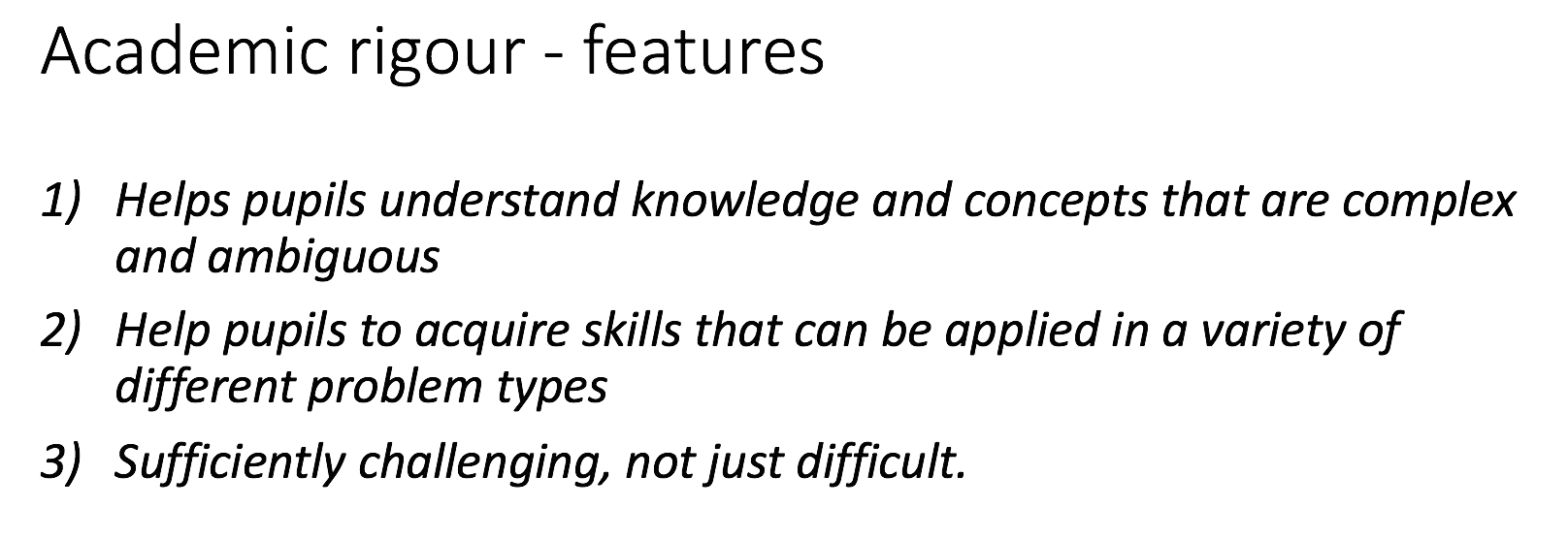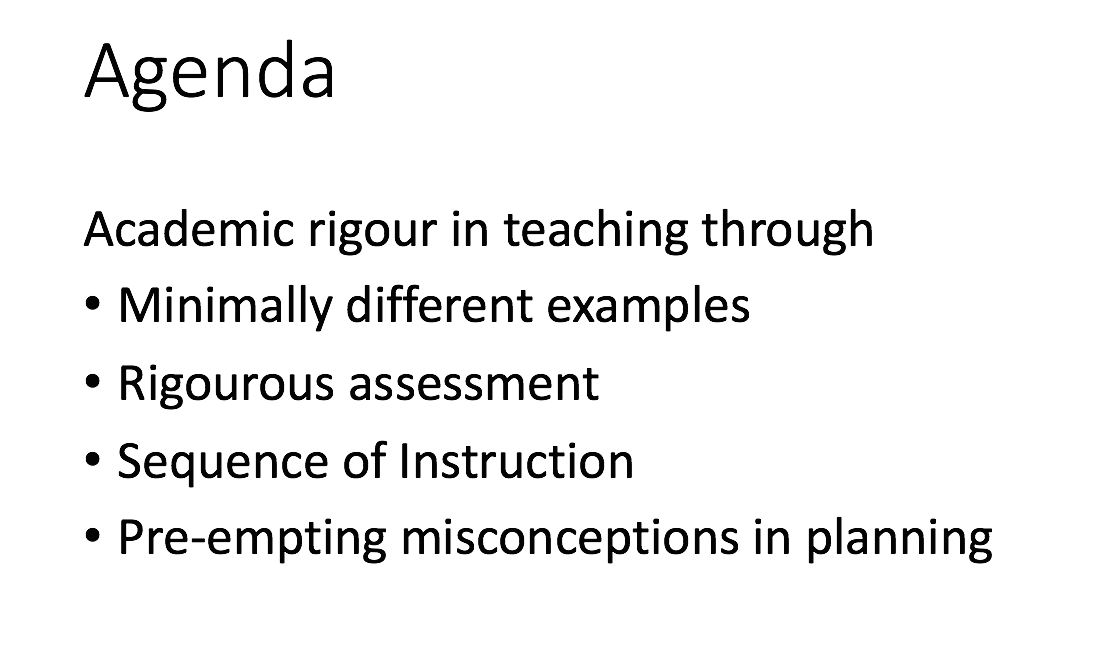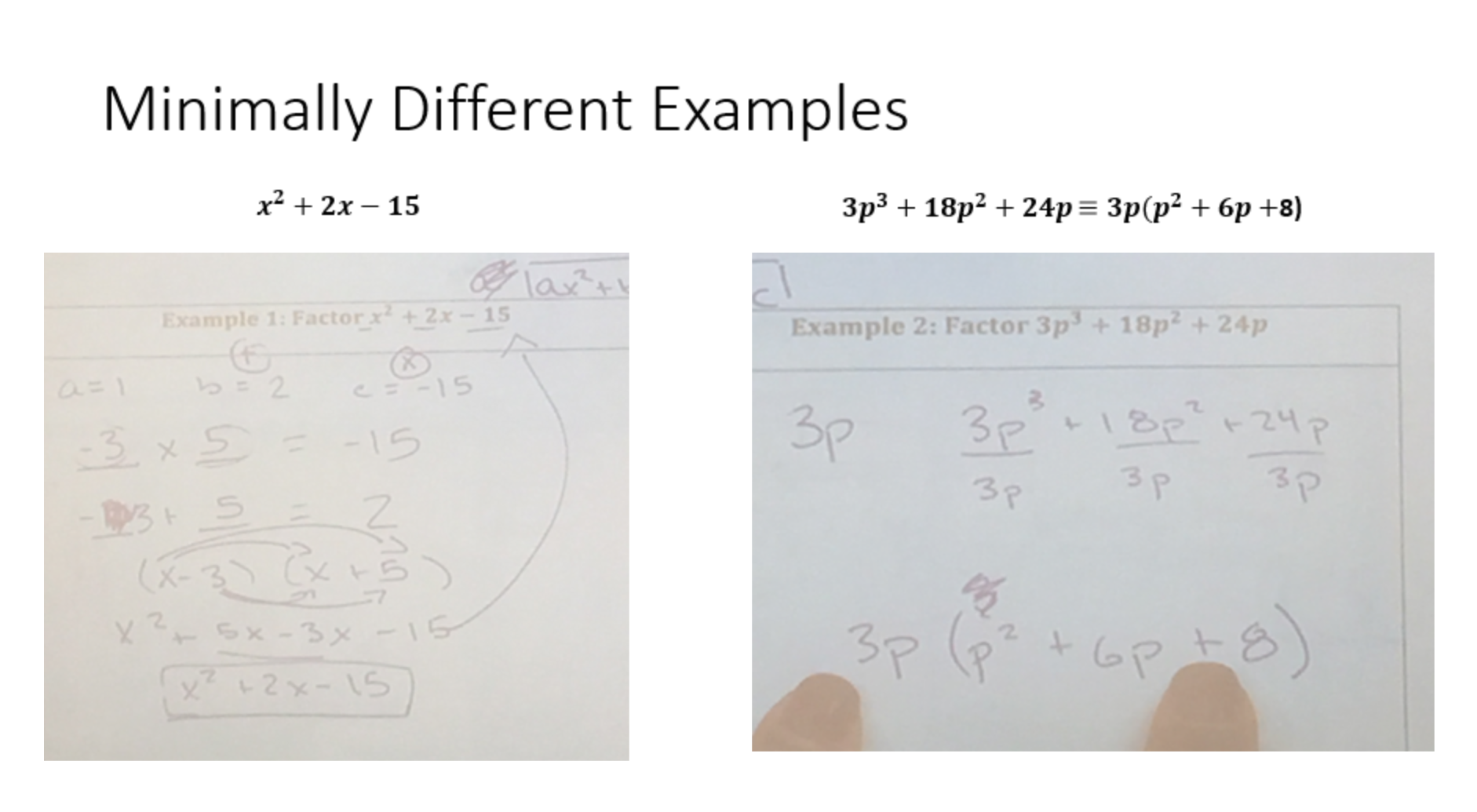School Visited: Uncommon Collegiate Charter High School
Class Observed: Algebra 1 Grade 9 Statistics (UK equivalent Year 10)
Theme of post: Pedagogy and Curriculum
This is the first blog post in a series complementing a workshop I delivered at Mathsconf6 entitled “Mathematics Pedagogy at USA Charter Schools”. Here I spoke of my experiences whilst visiting a selection of Uncommon and North Star academy schools in New York and New Jersey.
I discussed how the common denominator in each maths lesson I observed was the level of academic rigour in the teaching delivered to pupils. I am still trying to find a way to define this term, because it is overused and poorly defined. However, I do believe I may be able identify the evident features of academic rigour in the structure and delivery of each teacher’s pedagogy and instruction:
In my workshop, I discussed four examples of academic rigour that different teachers up and down the country can implement with minimal effort and maximum impact. Each blog post will discuss one example at a time. Today, this blog will address using minimally different examples during instruction.
Minimally different examples are examples to explain different concepts where the difference in the algorithm between one concept and the other can be distinguished as one additional step. This was one example I witnessed in one of the classrooms I was in.
The teacher presented the first expression to factorise, where the coefficient of a in the quadratic expression is 1. This was a recap exercise where she stated the values for the coefficients, and then she determined the two values of which the product gives us the value of c, and the sum gives us the value of b. She wrote the expression in its factorised form.
She then introduced the next expression to factorise. She stated that it looks visually very different to the first one, but that there is only one difference between the algorithm to factorise the first and second expression. She defined the minimal difference between the two as one additional step – which was at the start of the algorithm. She asked her pupils, “What is the greatest common factor (GCF) of all the terms in the expression?” Pupils spotted the GCF to be 3p, which she then factorised. She said “look, we now have an expression in the parenthesis which looks similar to the first expression we factorised.” The minimal difference between factorising the first and second expression was classified as one additional step. Traditionally, in my training, I would have seen the algorithms to factorise both the expressions as isolated and fragmented. Instead, they are connected; pupils were empowered to factorise more complex expressions from prior knowledge of the algorithm to factorise the first expression. Minimally different examples are a good strategy and example of academic rigour in the classroom because they help pupils to understand knowledge and concepts which are initially complex and ambiguous. Here, the difference between the two examples is classified and determined as one additional step in the algorithm. The possibilities are endless.
I plan to show different examples of how I have used the idea of minimally different examples in my teaching, sometime this week.



Leave a Reply
You must be logged in to post a comment.